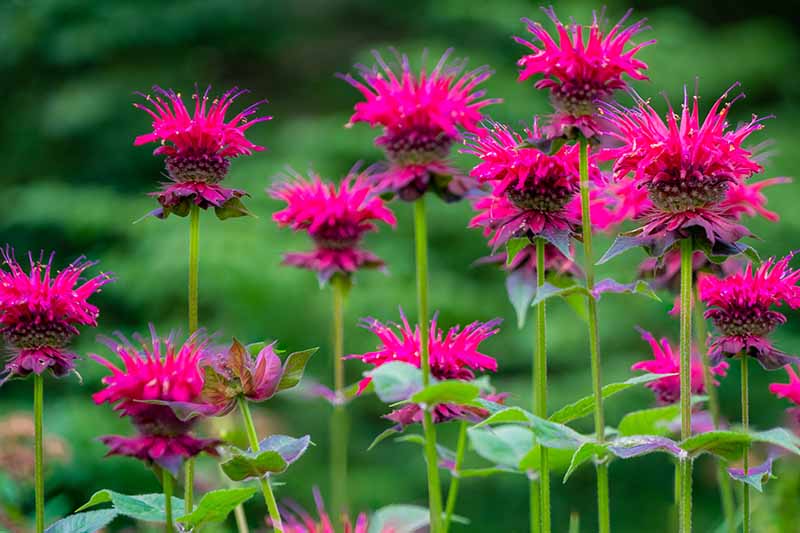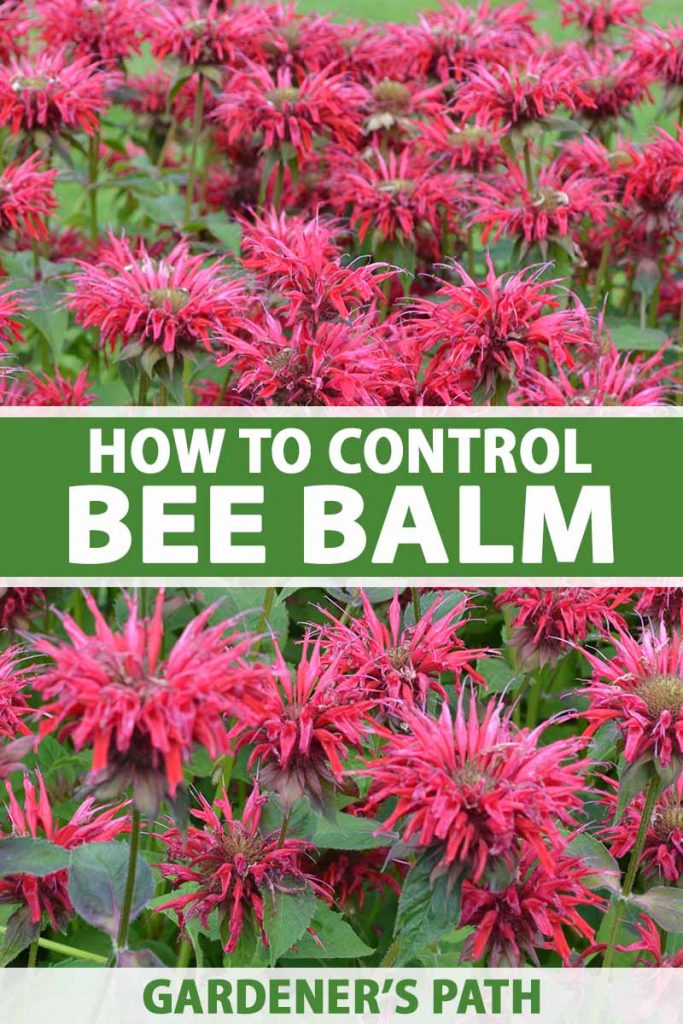Why Pruning is Essential for Bee Balm’s Health and Beauty
Pruning bee balm is a crucial step in maintaining its health and beauty. By pruning, gardeners can enhance the plant’s appearance, promote healthy growth, and encourage blooming. Without pruning, bee balm can become leggy and unruly, reducing its aesthetic appeal and potentially leading to disease and pest issues. By understanding the importance of pruning, gardeners can learn how to prune bee balm effectively, resulting in a thriving and vibrant plant that attracts pollinators and adds beauty to the garden.
Understanding Bee Balm’s Growth Habits: A Guide to Pruning
Bee balm, a perennial herb, has a unique growth habit that requires regular pruning to maintain its shape and size. Bee balm tends to spread quickly, producing underground stolons that can form dense clumps. If left unpruned, the plant can become leggy and unruly, reducing its aesthetic appeal and potentially leading to disease and pest issues. Pruning helps control the plant’s shape and size, promoting healthy growth and encouraging blooming. By understanding bee balm’s growth habits, gardeners can learn how to prune bee balm effectively, resulting in a thriving and vibrant plant that attracts pollinators and adds beauty to the garden.
How to Prepare for Pruning: Gathering the Right Tools and Techniques
Before diving into the world of pruning bee balm, it’s essential to gather the right tools and techniques. To prune bee balm effectively, gardeners will need a pair of sharp, clean pruning shears or loppers, depending on the size of the stems. It’s also crucial to learn how to make clean cuts, as this will help prevent the spread of disease and encourage healthy growth. When it comes to timing, the best time to prune bee balm is in the late winter or early spring, before new growth begins. This allows gardeners to shape the plant and remove any dead or damaged stems before the growing season. By understanding the necessary tools and techniques, gardeners can learn how to prune bee balm with confidence, resulting in a thriving and vibrant plant.
Pruning Strategies for Shaping and Maintaining Bee Balm
When it comes to pruning bee balm, a step-by-step approach is essential for achieving optimal results. To start, remove any dead or damaged stems, cutting them off at the base of the plant. This will help prevent the spread of disease and encourage healthy growth. Next, trim back any leggy growth, cutting stems back to about one-third of their height. This will help control the plant’s shape and size, promoting a bushy and compact growth habit. For optimal blooming, shape the plant into a rounded or oval shape, allowing for good air circulation and sunlight penetration. By following these pruning strategies, gardeners can learn how to prune bee balm effectively, resulting in a thriving and vibrant plant that attracts pollinators and adds beauty to the garden. Remember, pruning is an essential part of bee balm care, and by mastering the art of pruning, gardeners can enjoy a healthy and thriving plant for years to come.
Tips for Pruning Bee Balm in Different Seasons
When it comes to pruning bee balm, timing is everything. The specific pruning needs of bee balm vary depending on the season, and understanding these needs is crucial for optimal results. In the spring, prune bee balm to maintain its shape and promote healthy growth. Remove any dead or damaged stems, and trim back leggy growth to encourage a bushy habit. During the summer months, prune bee balm to encourage blooming and prevent the plant from becoming too leggy. Remove any spent flowers, and trim back stems to maintain a compact shape. In the fall, prune bee balm to prepare it for the dormant season. Cut back stems to about one-third of their height, and remove any dead or damaged foliage. By adjusting pruning techniques according to the season, gardeners can learn how to prune bee balm effectively, resulting in a thriving and vibrant plant that attracts pollinators and adds beauty to the garden. Remember, pruning is an essential part of bee balm care, and by understanding the specific pruning needs of bee balm in different seasons, gardeners can enjoy a healthy and thriving plant year-round.
Common Mistakes to Avoid When Pruning Bee Balm
When it comes to pruning bee balm, there are several common mistakes to avoid in order to achieve optimal results. One of the most common mistakes is over-pruning, which can lead to stress and weakened growth. To avoid this, prune only what is necessary to maintain the plant’s shape and promote healthy growth. Another mistake is pruning at the wrong time, such as during the peak blooming season. This can reduce the plant’s ability to produce flowers and attract pollinators. Instead, prune bee balm during the dormant season or after blooming has finished. Additionally, failing to make clean cuts can lead to disease and pest issues. To avoid this, use sharp and sterile pruning tools, and make cuts at a 45-degree angle just above a node. By avoiding these common mistakes, gardeners can learn how to prune bee balm effectively, resulting in a thriving and vibrant plant that adds beauty and value to the garden. Remember, proper pruning techniques are essential for maintaining the health and beauty of bee balm, and by understanding what to avoid, gardeners can enjoy a successful and rewarding pruning experience.
The Benefits of Pruning Bee Balm for Pollinators and Garden Health
Pruning bee balm is not only essential for the plant’s health and beauty, but it also has a significant impact on pollinators and the overall garden ecosystem. By pruning bee balm, gardeners can increase nectar production, which is essential for attracting pollinators such as bees, butterflies, and hummingbirds. This, in turn, can lead to improved pollination and increased fruit and seed production in other plants. Additionally, pruning bee balm can improve plant health by removing diseased or damaged stems, which can help prevent the spread of disease and pests. This can lead to a healthier and more resilient garden ecosystem, where plants are better equipped to thrive and resist disease and pests. Furthermore, pruning bee balm can also improve air circulation and reduce humidity, which can help prevent fungal diseases that thrive in humid environments. By understanding the benefits of pruning bee balm for pollinators and garden health, gardeners can learn how to prune bee balm effectively, resulting in a thriving and vibrant garden that attracts pollinators and adds beauty and value to the outdoor space.
Maintenance and Aftercare: What to Do After Pruning Bee Balm
After pruning bee balm, it’s essential to provide proper care and maintenance to ensure the plant recovers quickly and continues to thrive. One of the most critical steps is to water the plant thoroughly, as pruning can cause stress and dehydration. Watering will help the plant recover and promote healthy growth. Fertilizing is also crucial, as it provides the necessary nutrients for the plant to grow and bloom. A balanced fertilizer applied according to the manufacturer’s instructions can help promote healthy growth and blooming. Additionally, monitoring for pests and diseases is vital, as pruning can create open wounds that can be susceptible to infection. Keep an eye out for signs of pests or diseases, such as aphids, whiteflies, or powdery mildew, and take action promptly if any issues arise. By following these simple steps, gardeners can ensure their bee balm plant recovers quickly from pruning and continues to thrive. Remember, learning how to prune bee balm is only half the battle; proper aftercare is essential for maintaining a healthy and vibrant plant.






